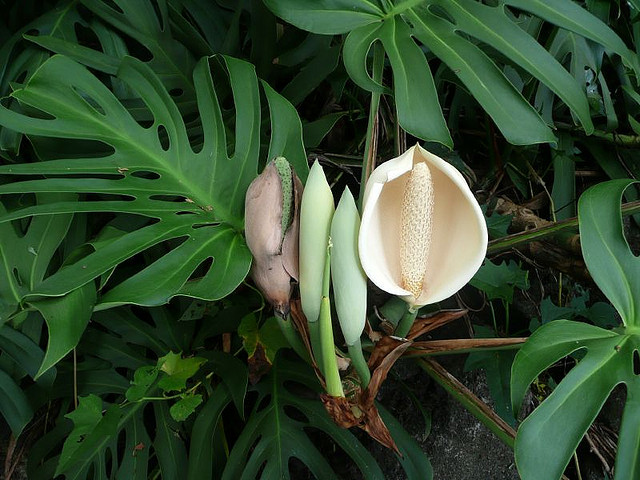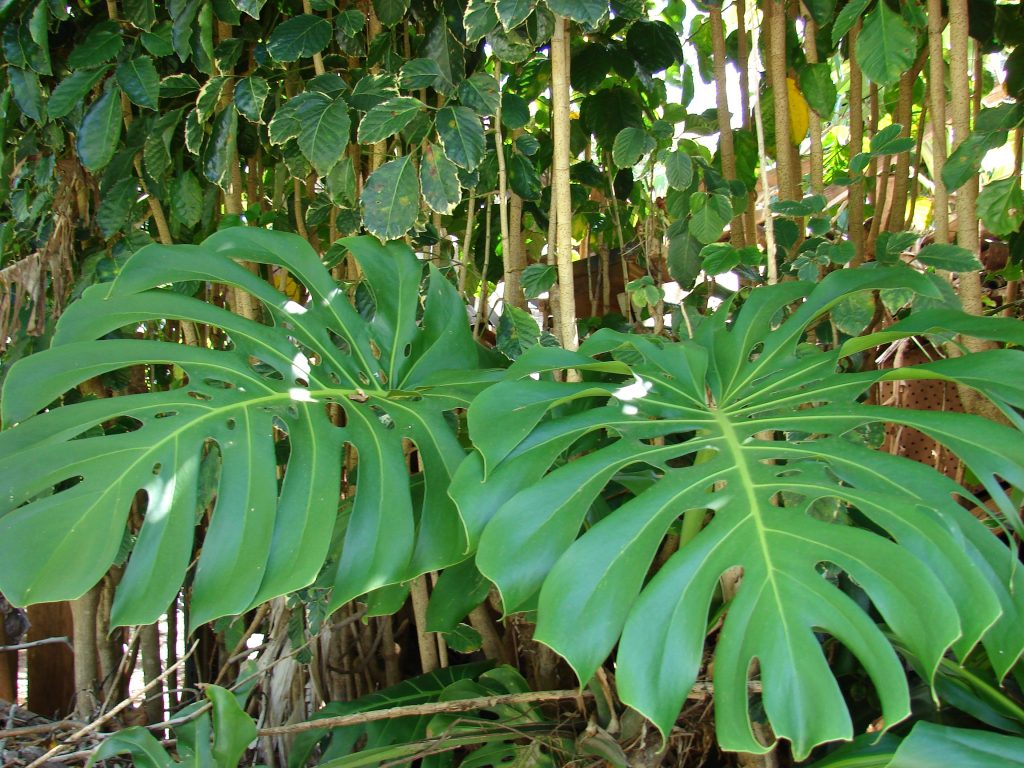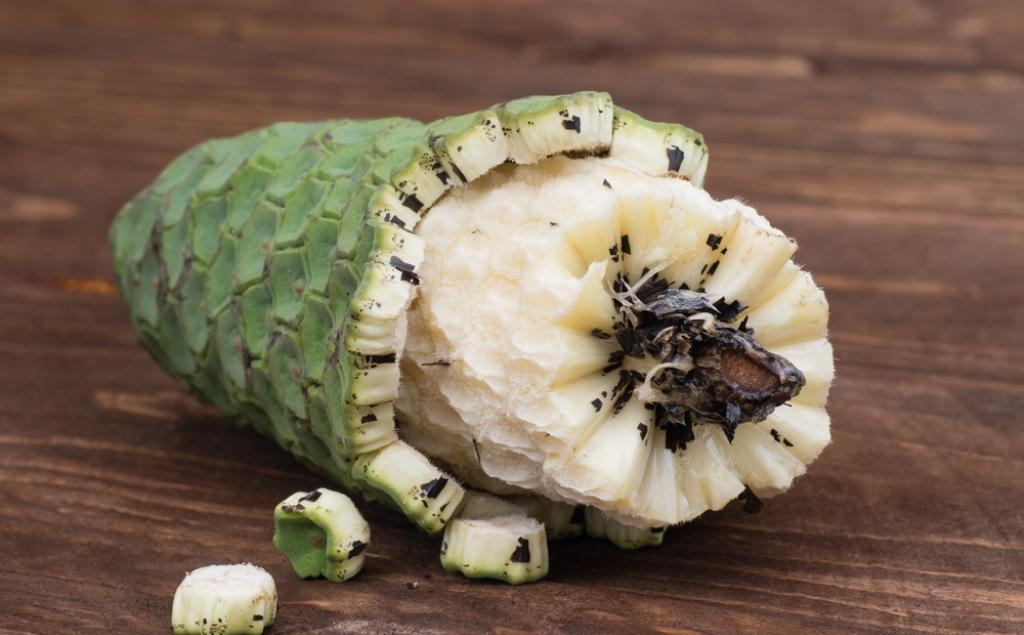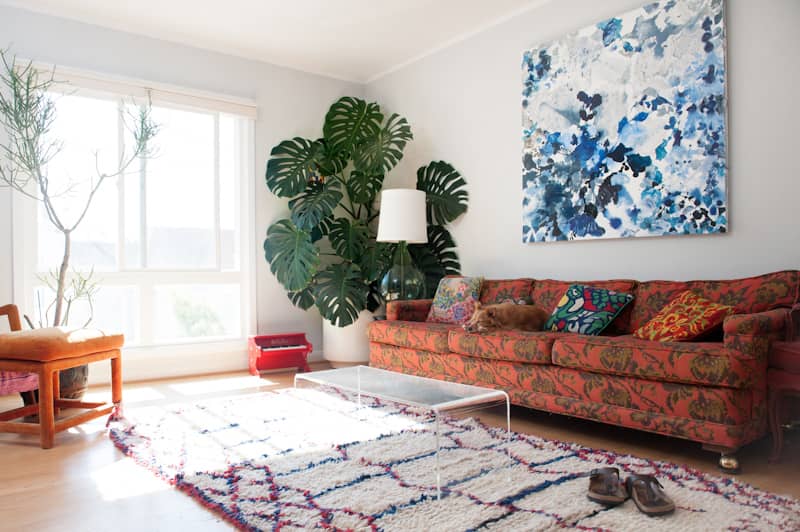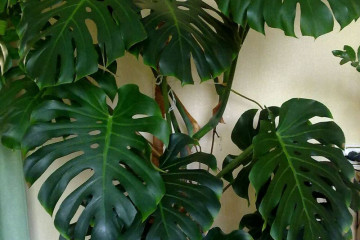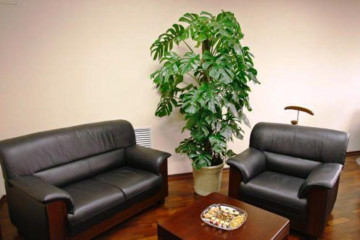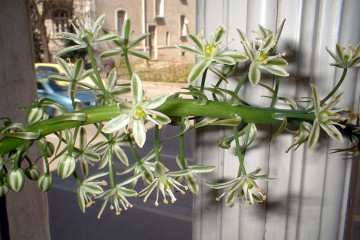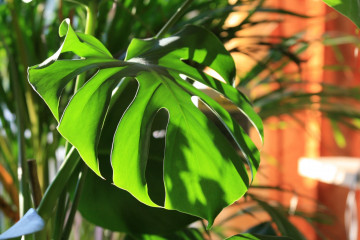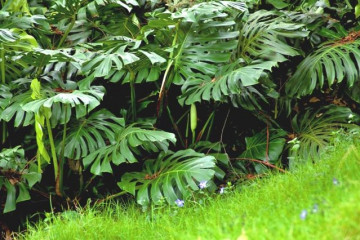Monstera gourmet (Deliciosa) - poisonous plant or not
Content:
The monstera plant is impressive in size, so it can only be kept in spacious rooms. Liana is popular for growing in offices, foyers and halls. In addition, the leaves of the flower contribute to the ionization of the air. The name is gourmet, or delicious, the variety got due to the fruits that have a sweet pineapple taste.
Biological features
The genus Monstera belongs to the Aroid family. The deposit is the tropical forests of Central and South America.
Monstera Deliciosa is a climbing species, the height of which can reach 4 m. The plant has a main fleshy stem from which aerial roots grow. They are needed not only for nutrition and reproduction, but also as additional support.
During the flowering period, cream cobs appear on the monster, covered with a light green fluff. After flowering, sweet and sour berries are formed. The flowering time falls on the spring-summer season, but this happens extremely rarely in residential premises.
Interesting Gourmet Monster Facts
There are many myths about the plant. The most common rumors concern that the monstera is poisonous, brings trouble to the house and takes energy away from the residents. There is no scientific confirmation of this, so you can safely start a vine in your apartment.
What is interesting about the monster Deliciosa:
- from the Latin alphabet, the name "monstrum" is translated as "monster". It was due to creeping stems, the diameter of which reaches 20 cm and has long aerial roots;
- according to another version from Latin, the name is translated as "bizarre", "amazing", which fully corresponds to its appearance;
- Princess of Brazil, Isabella Braganza, daughter of Emperor Pedro II, established the tradition of eating monstera fruits for dessert; this was her favorite delicacy;
- drops of sticky sap appear on the leaves before the rain, so the flower is a kind of barometer;
- esotericists believe that aerial roots take away energy from others, however, they are necessary exclusively to obtain additional moisture from the air, since the plant is native to the tropics;
- residents of Southeast Asia are confident that monstera is a source of health and well-being;
- in Thailand, it is customary to put a pot of liana near sick people;
- in Laos, monstera deliciosa is used as a talisman and placed on the doorstep of the house.
Monstera as a food product
In shape, the berry resembles an ear of corn, on top they are covered with dense scales, their length ranges from 20 to 40 cm and up to 9 cm in diameter.The pulp of the fruit is juicy, sweet in taste, reminiscent of a mixture of pineapple and banana, a little jackfruit.
For the use of monstera fruits for food, the plant is bred in Australia and India. If you managed to buy unripe fruits, then they are wrapped in foil and laid out on a windowsill in direct sunlight.
Composition and calorie content of monstera fruits
Nutritional value of fruits per 100 g:
- 73.7 kcal;
- 77.9 g of water;
- 16.2 g carbohydrates;
- 1.8 g protein;
- 0.2 g fat;
- 0.57 g dietary fiber;
- 0.85 g of ash.
The composition of berries has not been studied enough, it is known that they are rich in the following elements:
- sugar;
- starch;
- vitamin C;
- oxalic acid;
- thiamine;
- calcium;
- phosphorus;
- potassium;
- sodium.
As a result, the use of berries has a beneficial effect on the immune system, preventing viral and bacterial diseases, increases the tone of the body, stimulates physical and emotional activity. Eating fruits in food improves intestinal motility, eliminates muscle spasms, and fights dehydration.
Monstera: poisonous or not
Since the plant came to Europe from the tropics, it is logical to question whether it is possible to put a flower at home, whether the monstera is poisonous or not, especially if there are small children or pets in the room.
Is it possible to keep a gourmet monster at home
Keeping a plant in the house is not only possible, but also necessary. Monstera leaves do not contain any hazardous substances. You should be careful with microscopic needle-like formations that are in the pulp of the leaves, which can cause a burning sensation if the leaf enters the mouth. This can happen with cats, dogs or parrots who sinn gnawing indoor flowers.
As for the toxicity of the plant, there is some truth in this statement. There is poison in the juice of plant flowers, but in order to burn the mucous membranes of the mouth and stomach, you need to bite and chew the flower petal.
In defense of the monstera, it is worth noting that its leaves are good at trapping dust entering the room. At the same time, the plant secretes biologically active substances that purify the air and fight some viruses and bacteria.
Features of caring for a gourmet monster
Monstera gourmet is an unpretentious plant, minimal care is required.
Growing and Care Requirement:
- any lighting, except for direct sunlight;
- moderate air temperature (not lower than 12 ° C), the hotter, the faster growth occurs;
- the composition of the soil for growing: 1 part of sand, peat, sod land, 2 parts of humus, can grow in hydroponics;
- frequent spraying, wiping with a sponge, polishing the leaves;
- abundant watering, constant maintenance of the soil moist;
- transplanting as the plant grows (about 2 times a year);
- replacing the top layer of the substrate in adult flowers once a year;
- application of complex fertilizers from March to August every two weeks.
Monstera is ideal for growing in a heated winter garden. The plant is not afraid of pests, except for the scale insect.
Thus, all the myths about the flower are nothing more than fictions, so you should not be afraid of planting a monstera. On the contrary, it will only be beneficial.
